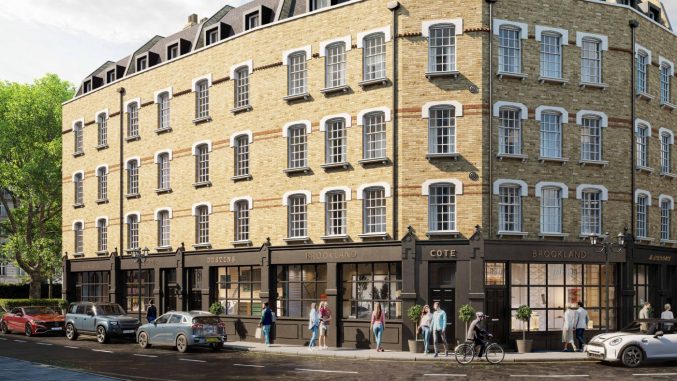Slush funds and floodgates – reality behind the rates war
By Laura Miller

Energy prices, food costs, NHS waiting times – everything, it seems, is going up. Except that is, mortgage rates.
From bridging loans to standard residential mortgages, rates that had crept higher during the height of the pandemic are falling.
Is this a natural loosening in a no longer coronavirus-clenched market, or a risky rate race to the bottom?
It’s raining rate cuts. Castle Trust Bank this month cut its bridge-to-let product to 0.67% a month up to 80% loan-to-value, part of wider reductions.
At the start of September Aspen Bridging cut 5bps from 70% LTV deals for prime residential purchase and refinance applications during for the whole month, having already reduced bridging loan rates and doubled the maximum bridge loan size to £10m in July.
The moves followed announcements Aspen had lent £51m from April to June 2021, the best quarterly performance in the lender’s history, with more than a third of deals completed over £1m.
Also in July, Hope Capital cut its Discounted Rate Loan bridging product to start from just 0.39% a month, the lowest ever bridging loan rate launched by the lender. This list is illustrative, but far from exhaustive.
Industry insiders say behind this sudden rash of reductions is a combination of triggers, rather than a single factor.
But the consequence of all these is there’s too much money sloshing around chasing too few projects amid ambitious plans to increase market share.
“The Covid pandemic has in some instances impacted the ability to fund loans for a period of time, leaving a lender with a slush fund, which could attract non-utilisation fees if not loaned,” says Andy Reid, sales director at TFG Capital.
Consequently, competition in certain sectors is, he says, fierce, prompting extreme tactics. “If you don’t stand out from the crowd, or don’t have a specific USP, the obvious means of attracting more enquiries in the hope of converting to progressing deals is to reduce rates,” he says.
In the first few months of the pandemic, from March 2020, as the Government tried to control the spread of Covid with lockdowns, many investment projects were postponed, stalled, or delayed.
“This has resulted in many lenders not being able to meet their projections and continue their growth plans,” says Hope Capital managing director Gary Bailey, among the lenders cutting rates.
Institutions left with a large facility now need to get out into the marketplace as things start to get back to normal.
But things have been far from normal – the stamp duty holiday has made the property market resemble a wildebeest stampede only with less grace, yet as much as lenders want to get back in the game they are being coy about the projects they choose, narrowing the options for funds in need of putting to work.
“The vast majority of lenders have a huge appetite to lend in their desired areas, however they have pots of funds they need to lend out in restricted sectors,” says Bailey. The competitive edge emerges by lowering rates.
Covid’s impact on everything over the last 20 months includes aggravating pre-pandemic bridging issues already effecting rates.
“Fundamentally what we’re seeing with rates is a supply versus demand imbalance that began pre-Covid with a growth in the number of lenders, and then accelerated since last summer as the property market surpassed all reasonable expectations coming out of the first lockdown,” says Josh Levy, CEO of Ultimate Finance.
The government’s emergency Coronavirus Business Interruption Loan Scheme (CBILS), handing out 80% Treasury-backed loans to virtually any company that needed it, has added oilfields worth of fuel to this raging bonfire of funds – in total £80.43bn worth of loans were approved across the CBILS, BBLS, CLBILS and Future Fund.
“It attracted a new wave of yield-seeking institutional investors and debt funds looking for an indirect way of accessing the market, giving a great impetus to the supply of funding that has continued beyond the scheme,” Levy says.
Non-CBILS accredited lenders that missed out on the significant volume that went to CBILS lenders, he adds, have been playing “volume ‘catch-up’” using rate cuts.
If Covid fanned the flames of the recent rate cuts, there was already plenty of strong wind building up in the mismatched market.
“There been a steady increase in demand for bridging finance in recent years, but that has been more than exceeded by a big jump in the number of lenders, and the amount of capital looking to be deployed,” says Levy.
From the perspective of borrowers, lower interest rates on loans are near-universally seen as a very good thing thank you very much.
“Low rates are a great benefit to the borrower, not only do they reduce the overall costs of funds but help support other areas in the process,” says Hope Capital’s Bailey.
Building material costs, for example, have in some cases increased significantly owing to the pandemic, he points out, which can be offset by the availability of cheaper bridging loans.
“The reduction in rates means borrowers projects remain feasible,” he says, though only when those projects coincide with the specific areas where lenders’ appetite remains at its strongest.
Borrowers’ could find their short-term gains as winners in the game of who has the lowest rate calcify into longer term problems for customers of the bridging market, however.
While lenders are essentially cutting deep into profits to buy borrowers, there has been no corresponding shift in wholesale funding costs for lenders.
“It remains to be seen if margins can sustain any further rate cuts,” says Levy. If rate cutting continues and more lenders chase the same institutional wholesale funding lines, he sees product offerings at risk of being commoditised around the same core risk and underwriting criteria.
“This could lead to a two-stage market where prime borrowers have access to cheap and abundant funding sources, and non-prime borrowers or non-standard asset types struggle to attract much demand at all,” Levy adds.
Some lenders are seeking out potentially less ruinous routes to attract customers. For example some have chosen to compete on risk elements (desktop valuations, 85% LTV, no requirement for credit checks or personal guarantees), that go beyond price.
That said, a race to the bottom on risk management is not a flawless alternative to rate cutting. “At this point the perceived rate war is only a consequence of surplus of funding chasing a finite number of deals, I would be more worried about a race to the bottom if there was a rush to loosen criteria to the point it became a risk issue,” Damien Druce, commercial director at Black & White Bridging says.
A lender’s ability to fulfil all a borrower’s auxiliary needs is especially relevant, however, when their advertised rates rarely end up being the whole story.
“It is important brokers understand only a percentage of their client’s cases will qualify for the headline rate,” says Hope Capital’s Bailey, “often the lowest rate alone isn’t the ideal solution for the borrower, which is why the whole lender proposition should be considered”.
Even if the cut-price rate applies, borrowers could end up with a rum deal. “Lets be honest, a low rate may seem very attractive at first glance but if there are limitations on the loan size or LTV for example, that particular product may not be suitable or applicable to the clients’ needs and requirements,” says TFG Capital’s Reid.
Often what is more important to the borrower are flexible products that meet their needs, a high quality service and the reassurance the deal will be delivered on time.
“Competitive rates are naturally part of the overall proposition,” says Hope’s Bailey, “but savvy brokers are looking at lenders to support their clients”.
Black & White Bridging’s Druce agrees: “Consistent decisions, transparency and the ability to make fast, binding agreements, backed up with realistic timeframes for delivery are the cornerstones which more brokers are looking for more than simply the ‘best’ rate,” he says.
Keeping up with market trends and constant rate adjustments can be a minefield for a borrower, “which is why it’s always advisable to seek the professional assistance of a reputable and knowledgeable broker firm who will be in a position to guide you through the maze of rates and criteria”, says Reid.
Questions brokers and borrowers should be asking of lenders beyond rates will ultimately determine how happy they are with any deal, he adds.
For example, if the enquiry is of an incredibly urgent nature, is the lender able to process and fund the deal in a matter of days? If the case has multiple complexities or adverse credit, does it fit the criteria of the lower rate?
“A lender needs to be holistic and pragmatic in their approach to agreeing to progress an enquiry but that may necessitate a rate higher than their lowest based on a risk versus reward scenario,” he argues.
“In my experience,” Reid says, “in the comparison between any two or three rates being presented from different lenders, unless the gap is cavernous, the applicant will often accept a higher rate in the confidence that the application will actually get funded.”

Laura Miller is a freelance journalist who writes about money and business. She regularly appears in UK national and trade newspapers and magazines, and has previously worked for ITV News and the Telegraph among others. Find her on twitter @thatlaurawrites










You must be logged in to post a comment.